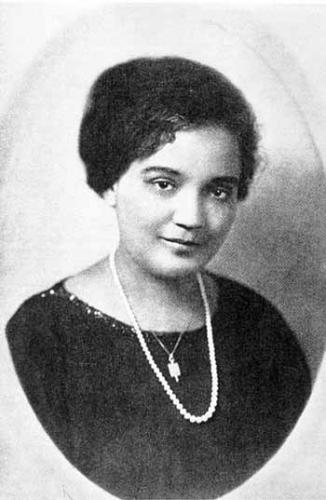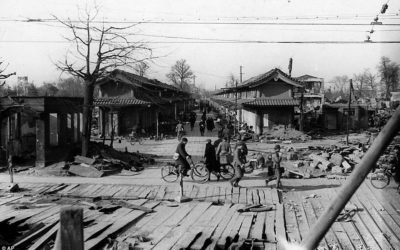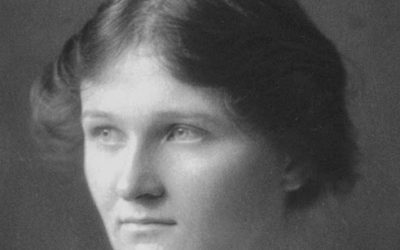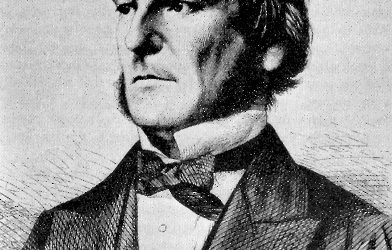Talent is something that’s easy to recognize retrospectively. We look back and see the great things that certain people have accomplished, and we infer from this that they must have been quite talented. Many people’s careers, however, depend on their ability to do something far more difficult: spotting the potential of people whose greatest work is still to come. You can find professionals doing this in practically every industry, from movie producers in Hollywood to hiring managers in major corporations, but a less prominent figure who often does exactly the same job is the magazine editor.
It’s sometimes said that behind every great man you will find a great woman. The truth behind this truism is that all talented people depend on the support and encouragement of those around them, and writers are no different; they depend on editors and publishers who understand them and drive them to do their best. During the flowering of black literature in New York City known as the Harlem Renaissance, there were many young and ambitious writers who needed this kind of help more than ever, and fortunately they had a champion close at hand: the editor of NAACP’s magazine The Crisis, Jessie Redmon Fauset.
Jessie Fauset was born on April 27, 1882, in what is now Lawnside, New Jersey. She grew up as part of the large, interracial family of Redmon Fauset, a Methodist minister, and his second wife Bella; Jessie’s own mother had died just a few years after giving birth to her. The family was poor but placed great stock by education, like many church families at the time. Jessie lived up to her parents’ aspirations by becoming an exceptional student. Her grades were impressive enough to earn her admission to the newly integrated but mostly white Philadelphia High School for Girls, where she would graduate at the top of her class.
Fauset now hoped to move on to the prestigious Bryn Mawr College, even though it had never accepted a black student before. In a remarkable display of soft racism, Bryn Mawr chose to spare itself the trouble of debating her admission by applying on her behalf for a scholarship at Cornell University and advising her to go there instead. Interested more in the quality of her education than the prestige of her school, she took the scholarship and studied classical languages at Cornell.
After graduating, the next obvious career step for a woman in Fauset’s circumstances was to teach for several years, but here she ran into a snag. Ironically, her home of Philadelphia, which had been one of the first cities to promote the integration of students, apparently had no interest in integrating the faculty who taught them. Fauset was unable to find a teaching position in any Philadelphia school, and ultimately accepted a position at the segregated M Street High School in Washington, D.C., where she taught French and Latin for more than a decade.
While working as a language teacher, Fauset also continued her education and wrote in her spare time. Starting in 1912, she began submitting pieces to The Crisis, a new magazine funded by the NAACP and edited by its most prominent founder, the writer and social activist W.E.B. Dubois. Dubois was impressed by her writing, and he urged her to join the magazine’s staff to improve its still embryonic literary section. After several years of correspondence, Fauset agreed to become The Crisis’ literary editor in 1919.
The timing couldn’t have been more opportune. The previous year had seen the end of World War I and the return of normal life in the United States, and the response from New York City’s populace was an outpouring of literature. 1918 is widely considered to mark the beginning of the “Harlem Renaissance”, the first African-American literary movement to receive national attention, and Fauset was right in the thick of it. For seven years she filled the pages of The Crisis with the work of New York’s greatest writers, like the introspective poet Countee Cullen and the envelope-pushing novelist Claude McKay. At the same time she put out several of her own novels about black identity and society. For both her own work and the pieces she edited, her standards were the same: write what you know, don’t resort to clichés or stereotypes, and keep your characters and stories true to life.
Although Fauset was involved in the publishing industry for nearly two decades, one of her greatest accomplishments was also one of the most short-lived. In late 1919, she collaborated with Dubois to expand the yearly “children’s issue” of The Crisis into an independent publication, to be called The Brownies’ Book. Dubois and Fauset were both concerned about the stereotypical and prejudiced depictions of African Americans in children’s fiction, when it even included them at all. In place of this, they hoped to tell black children stories about the real history and achievements of black citizens, to give them confidence in themselves and role models to emulate.
As literary editor of The Brownies’ Book, Fauset would provide an inviting and entertaining complement to Dubois’ editorial content, which like most of his work for The Crisis tended to be rather dry and factual. The new monthly magazine, the first in history aimed at a young black audience, was one of the most ambitious projects either of them had ever attempted; it may, in fact, have been too ambitious to last. The Brownies’ Book launched in January of 1920 and continued until December of 1921, when financial concerns caused it to be reabsorbed by The Crisis. Although the magazine was short-lived, its influence on literature was surprisingly and subtly profound. To give an example, among the pieces Fauset published in her literary section were the first published poems by a young writer who would later rise to the top of the Harlem Renaissance pantheon: Langston Hughes.
Before Jessie Redmon Fauset arrived at The Crisis, the magazine was not well known for publishing literature, and after she left in 1927 it mostly abandoned literature as a focus; because of this, it was easy for the general public to slowly forget the editorial force it had once been. Fauset continued to teach and write long after she left the publishing industry behind, but because she wasn’t a devotee of the limelight she allowed her fame to slip away. However, no one should confuse this lack of self-promotion with unimportance. Although Fauset’s name is not well known, the revolutionary literature which she promoted and produced is a fixture of modern American culture. In a world obsessed with talent and fame, we would do well to remember that behind every great work there is more than one great worker.
Next Post: Max Factor, the Polish-American cosmetician whose long and difficult career began in poverty at the age of eight and ended in national acclaim.














